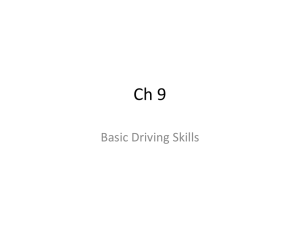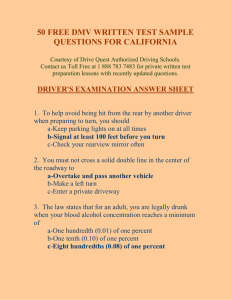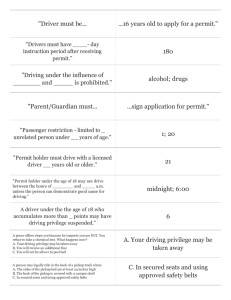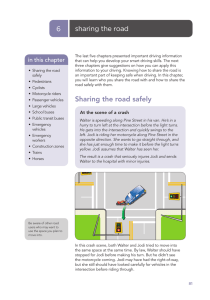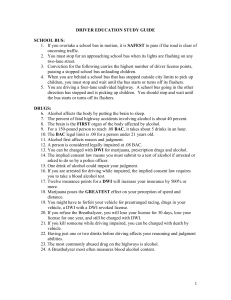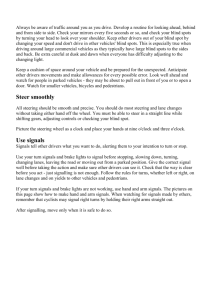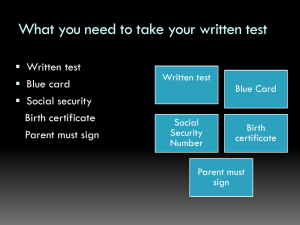Manitoba Driver Handbook Points - Traffic Laws & Safety
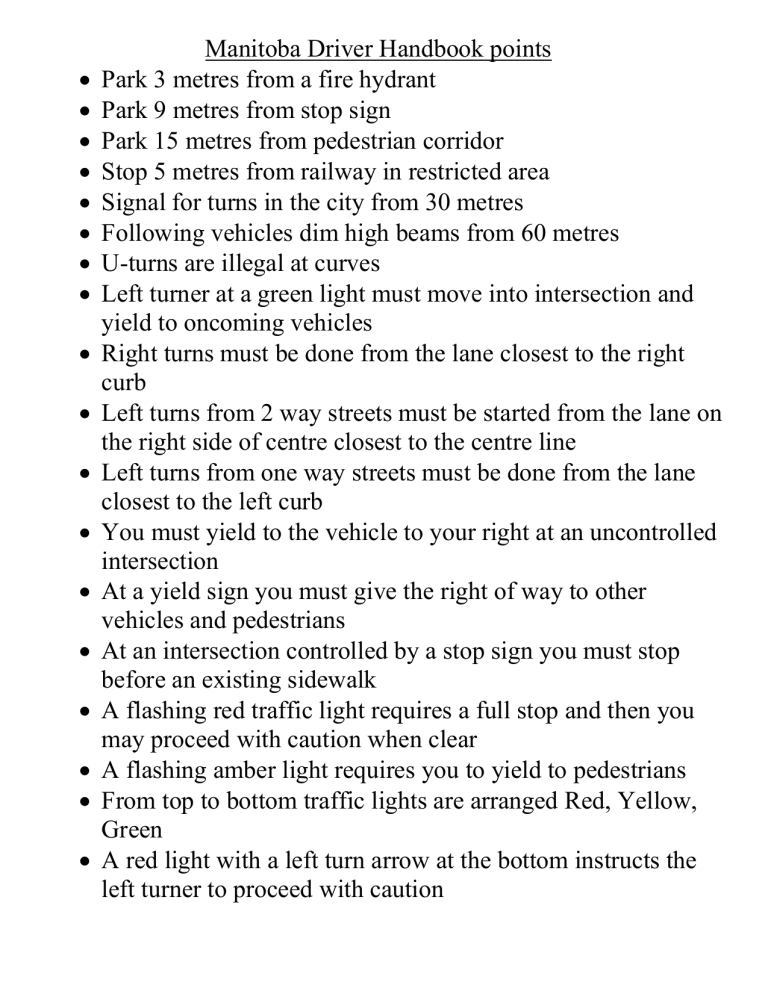
Manitoba Driver Handbook points
Park 3 metres from a fire hydrant
Park 9 metres from stop sign
Park 15 metres from pedestrian corridor
Stop 5 metres from railway in restricted area
Signal for turns in the city from 30 metres
Following vehicles dim high beams from 60 metres
U-turns are illegal at curves
Left turner at a green light must move into intersection and yield to oncoming vehicles
Right turns must be done from the lane closest to the right curb
Left turns from 2 way streets must be started from the lane on the right side of centre closest to the centre line
Left turns from one way streets must be done from the lane closest to the left curb
You must yield to the vehicle to your right at an uncontrolled intersection
At a yield sign you must give the right of way to other vehicles and pedestrians
At an intersection controlled by a stop sign you must stop before an existing sidewalk
A flashing red traffic light requires a full stop and then you may proceed with caution when clear
A flashing amber light requires you to yield to pedestrians
From top to bottom traffic lights are arranged Red, Yellow,
Green
A red light with a left turn arrow at the bottom instructs the left turner to proceed with caution
A signal is required when you start, turn, change lanes or move from a straight line
If an emergency vehicle approaches from the rear with active lights and siren, pull to the edge of the roadway and stop
You may do a right turn on red if you do a full stop wait for cars or pedestrians and there is no sign prohibiting a right turn on red
A supervising driver must have held a full licence for at least
3 years
A supervising driver must be the only front seat passenger
A supervising driver’s blood/alcohol level must be below .05
Operating a vehicle with a learners licence requires you to have zero BAC (no alcohol)
You can not tow any vehicles or trailers with a learners licence
To reduce glare from oncoming headlights avoid looking directly at the lights
Driving at night requires special attention because seeing distance is shorter
When following or meeting a vehicle dim high beams to avoid blinding other drivers
Use low beam headlights in snow or fog
Headlights must be on a half hour before sunset until a half hour after sunrise
Always yield to trains and funeral processions
Always wait for gate or barrier to lift at a railway crossing
Always yield to pedestrians at a pedestrian or school crossing or corridor
Never pass other vehicles that are stopped or slowing near a marked school or pedestrian crossing or corridor
Never pass in a school area 15 minutes before or after classes
Have your vehicle checked twice a year for mechanical defects
The minimum tire tread depth in Manitoba is 1.6 mm
Aggressive driving uses 39% more fuel
Under inflated tires use 3% more fuel
Driving 120 km/h instead of 100 km/h uses 20% more fuel
Drive slowly and press brakes lightly if brakes are wet
If a tire blows out, release the gas pedal to slow the vehicle gradually
If your right tire runs off pavement the first thing to do is remove your foot from the gas pedal and drive straight
If you are tired stop and rest
The first thing to do after an accident is check for injuries
Hand signal for stop is left arm down
Hand signal for a right turn is left arm up
Hand signal for a left turn is left arm straight out
Your horn must be loud enough to be heard from 60 metres away
You must notify DVL within 15 days of a change in your name or address
Leave a four second space gap with the vehicle in front of you
If a vehicle follows you too closely gradually slow down
A safe speed is one that always allows you to stop for an emergency
Being passed slow down and move to the right
You may not speed to pass somebody
A first conviction of drug/alcohol impairment while driving results in a minimum 1 year suspension
In the city (urban) a street with no speed limit sign is 50 km/h
Outside the city (rural) a street with no speed limit sign is 90 km/h
Seatbelts must be worn at all times unless exempted by law
A full stop is required before leaving any parking lot, back lane or driveway
You may leave a vehicle running while unattended only to warm or defrost
On ice or snow start out slowly and test your braking and steering control
When braking without A.B.S. apply the brakes with steady pressure without locking the wheels
Slow before entering a curve
Windows, Mirrors, lights and licence plate must be clear of snow
To change lanes you must signal, mirror check and shoulder check
To eliminate your blind spot you must look over your shoulder
A solid white line means traffic is moving in the same direction and you can’t change lanes
When there are two lines dividing traffic lanes you may cross the line if it is broken on your side and you can’t cross if it is solid on your side
If an oncoming car approaches you head on in your lane you should brake hard and steer to the right hand shoulder
On an undivided highway a school bus that has it’s lights flashing can not be passed until the bus starts driving or the flashing lights are turned off
When parking uphill with a curb turn your wheels away from the curb
When parking downhill turn your wheels towards the curb or road edge
Bicycles have the same rights and duties as all other vehicles
It is illegal to drive with headphones covering both your ears


